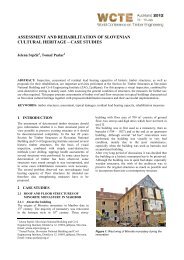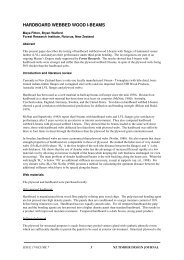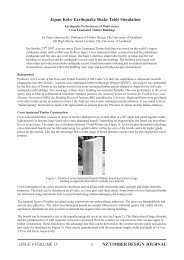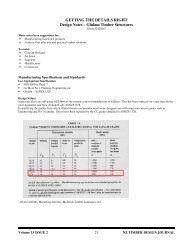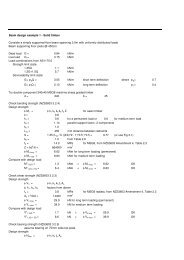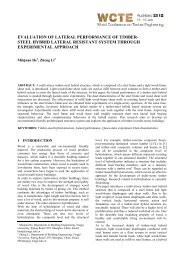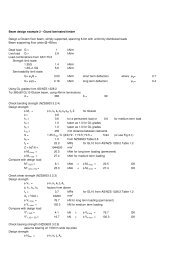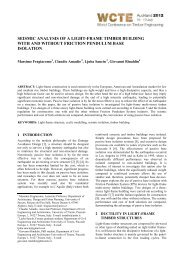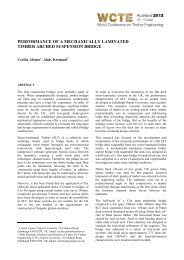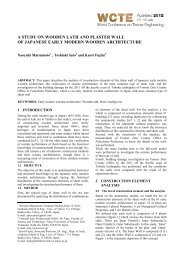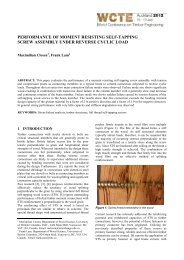WAITOMO CAVES VISITOR CENTRE Alistair Cattanach, BE (Hons ...
WAITOMO CAVES VISITOR CENTRE Alistair Cattanach, BE (Hons ...
WAITOMO CAVES VISITOR CENTRE Alistair Cattanach, BE (Hons ...
Create successful ePaper yourself
Turn your PDF publications into a flip-book with our unique Google optimized e-Paper software.
Figures 19. Entry toilets and cave path<br />
accurately to start and end the rib alignments. After<br />
significant cross-checking the adjustment to the<br />
alignment of each rib, all ribs were positioned well<br />
within tolerance of 40mm in the length (over 28-34m).<br />
Figure 18. Erection photo courtesy Hawkins<br />
Once heights were re-checked, end fixings and the fitting<br />
of node joints and cables could begin. The end fixings<br />
were generally site-drilled 14-gauge self-drilling screws<br />
through the steel bunny ears to achieve the 40mm<br />
tolerance in length. Once all hardware was in place, the<br />
scaffolding was removed and the deflections of the tips<br />
monitored. A tip deflection of 376mm was recorded<br />
against a predicted 377mm, although there was a<br />
subsequent settlement of another 10-15mm after the<br />
structure was oscillated to check the dynamic tip<br />
frequency.<br />
Figure 20. Cave exit path with Visitors centre beyond<br />
The ETFE cushions were then erected in their extrusions<br />
and subsequently inflated. The pull-in force at the<br />
perimeter from this inflation causes the tips of the<br />
gridshell to rise approximately 350mm, countering the<br />
deadload deflection.<br />
Figure 21. Four-way cable node<br />
NEW ZEALAND TIM<strong>BE</strong>R DESIGN JOURNAL VOL 18· ISSUE 3 11



